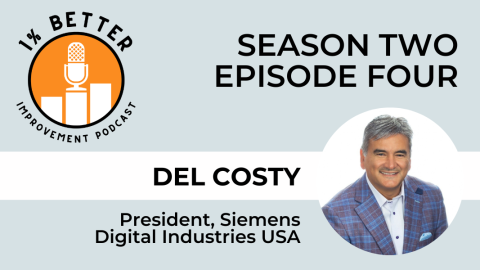Robots are being used to speed efficiencies and remove some of the administrative tasks that can slow down an engineer. However, with RPA being less common in the engineering sector, it can be met with some suspicion. Expleo’s Rebecca Keenan explains the twin opportunities of RPA in engineering that make sense on both a business and an individual level. Discover her 5 top tips for making RPA stick.
Within customer-facing sectors such as financial services, utilities, and retail, process automation is already changing the way that organizations service their customers and workforce. However, in more industrial processes, such as engineering, Robotic Process Automation (RPA) growth is still embryonic by comparison.
Not for long. The potential for change in engineering is enormous, with two clear opportunities. Firstly, there are the clerical, back-office processes that are common to all industries. For example, HR and finance departments, contact centers, supply chain management, and so on, areas where RPA has made its name in recent years. Engineering firms can benefit from the same quick wins.
Then, there are more bespoke elements, whether in design or production, to help reduce tedious activity. For example, if a process is highly repetitive and rules-based, with only the underlying data changing, there is an opportunity to automate. Not only will this speed up these processes, but it will reduce the potential for human error, which can lead to delays further down the line.
Human-in-the-loop automation is the next step, combining the human and digital workforce. For example, a robot could pull information from a CAD system, perform some initial updates, then present the findings back to an engineer on the factory floor. The engineer can make any changes, add data or confirm aspects, then send it back to the robot for finishing.
There is scope too for predictive analytics by bringing in data science and machine learning to increase the power of automation to your organization. Why not entrust robots to calculate the optimum moment to replace a part of a vehicle or tool, and then order that part to arrive where it’s needed, just in time? The sky is the limit.
Turning the corner
Trissential’s parent company, Expleo, is currently involved in a pilot project for a major defense contractor that will create savings of over $1 million by reducing the repetitive tasks that typically take up 30% of an engineer’s time. Instead of manually inserting digits from one form to another, a robot does that administrative workload automatically. The elimination of manual effort enables resources to be refocused on critical design blockers or allocated to other programs.
Engineering is a risk-conscious environment, so any process automation must provide a secure solution. Change management is also vital, especially in an industry that is new to the potential benefits of RPA. Alongside education, the endgame is a valuable watchword. What will success look like? What will RPA mean for me, individually? When teams can envision the benefits, instead of relying on scare stories and rumors, progress quickly happens. By reducing the time on tedious chores, people are placed on more high-value tasks that tend to be more satisfying from a professional perspective.
RPA is often the entry point for more sophisticated technologies such as artificial intelligence and machine learning, which create a closer integration of the human and digital workforce. Engineering firms that recognize the future is changing fast will target RPA as the natural next step towards a more agile organization. The need to make faster decisions, with fewer mistakes, makes a clear case for process automation. Rivals will be considering RPA, if not already investing. To stay competitive, firms need to keep that digital edge alive in their own organization.
Harnessing the combination of human and digital talent is a business priority for the rest of this decade. RPA is coming to engineering. I do not doubt that. The potential for efficient automation that makes humans more efficient too is simply too attractive.
5 tips for making RPA work in engineering
- Have a vision of what success looks like before you start. Creating a vision and aligning it with your organization’s overall strategy and goals will allow you to gain maximum benefits from your process automation initiatives. Outline how RPA will transform your processes and improve business performance across the entire organization.
- The cultural change is often more challenging than the technical one. Preconceptions and personal fears must be addressed openly, with full buy-in and vocal support from the leadership team. A Senior Steering Committee, including the heads of quality, IT, HR, engineering, and procurement, will help unite the different entities within the organization under a common message. Without board-level support, it’s rare to see RPA programs succeed. Education is always key. You have got to bring people on the journey with you. Keeping the robotics team secret just leads to distrust and resentment.
- To turn a pilot into a scaled and lasting success, you need to treat RPA as a transformation program. Don’t think in terms of a single robot in one part of the business, but rather the first robot of hundreds that could drive efficiency in years to come. In that way, you will get further down the track of making the necessary cultural changes in the whole organization.
- Process optimization before automation can significantly differentiate what you can automate and increase the benefits to your organization. A focused approach to process pipeline creation and prioritization should be taken.
- Ensure you have metrics in place to track the success of your implementation. You should always measure the performance of your processes before automation. This will help with benefits realization. It will also be a help if you need to optimize your robot. Processes are continuously made more efficient as feedback and data from the entire digital workforce are captured, consolidated, and analyzed.
To fully realize the potential of RPA, you need to embrace the human benefits it brings. A digital workforce will empower your engineers to do what they do best: engineer.
This post by Rebecca Keenan, Expleo Global Head of Process Automation, first appeared on the Expleo site here.






